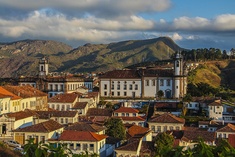
Minas Gerais: Marvelous Sunrises, Amazing Surprises - Part 1
Last updated: Saturday August 7th, 2021
Report this blog
So I'm going to start a series about the best first-level subdivision in the world. Believe me. This is the state I was born in, live in, and will certainly die in (wow, I think that was depressing...you gotcha lol). It gave me the name MG. Welcome to the fantastic state of Minas Gerais!
Minas Gerais is one of the 27 federative units in Brazil, being the fourth state with the largest territorial area and the second in number of inhabitants, located in the Southeast region of the country. It is limited to the south and southwest with São Paulo, west with Mato Grosso do Sul, northwest with Goiás and Distrito Federal, north and northeast with Bahia, east with Espírito Santo and southeast with Rio de Janeiro. Its territory is subdivided into 853 municipalities, the largest number among Brazilian states.
The topography of Minas Gerais is quite rugged, with some of the highest peaks in the country in its territory. The state is also home to the source of some of the main rivers in Brazil, which places it in a strategic position with regard to national water resources. It has a tropical climate, which varies from colder and more humid in the south to semiarid in its northern portion. All these allied factors favor the existence of a rich fauna and flora distributed in the biomes that cover the state, especially the Cerrado (savannah) and the threatened Atlantic Rainforest.
The territory of Minas Gerais was inhabited by indigenous people when the Portuguese arrived in Brazil. However, there was a large migration to the state from the moment that the existence of gold was announced. The extraction of metal brought wealth and development to the then province, providing its economic and cultural development. But gold soon became scarce, causing the emigration of a large part of the population, until a new cycle (coffee cycle) would again bring Minas to national prominence, the end of which led to a relatively late industrialization process. Minas Gerais currently has the third largest gross domestic product in Brazil, and a large part of the total produced in the state is still due to mining activities. Such development also comes from its remarkable infrastructure, such as the large number of hydroelectric power plants and the largest road network in the country.
Due to its natural beauty and its historical heritage, Minas Gerais is an important Brazilian tourist destination. The people of Minas Gerais have a peculiar culture, marked by traditional religious manifestations and typical cuisine from the countryside, in addition to national importance in contemporary artistic productions and also in the sports scene.
I will make a series, with 3 chapters about Minas Gerais. This is the first, and we'll talk about some first and useful info, and the long and fascinating history of Minas. In the second chapter, we will deal with geographic aspects, such as climate, relief, biodiversity, hydrography, economy, and the most populous cities. The last chapter will bring the state's culture, which includes points such as literature, gastronomy, music, tourism, sports, folklore, famous people who were born in Minas Gerais, and curiosities. To end chapter 3, and the series, I will show a series of images of Minas Gerais, such as rivers, mountains, historic or modern buildings, and various landscapes. I'm proud to be born here, I don't hide from anyone, and this series will show the appreciation I have for Minas, and also how much I'm not just fawning over lol. Will it be work? I don't know, but I want to accept my own challenge. So let's get started soon!
First information
| Minas Gerais | |
|---|---|
| Flag |  |
| Coat of arms | 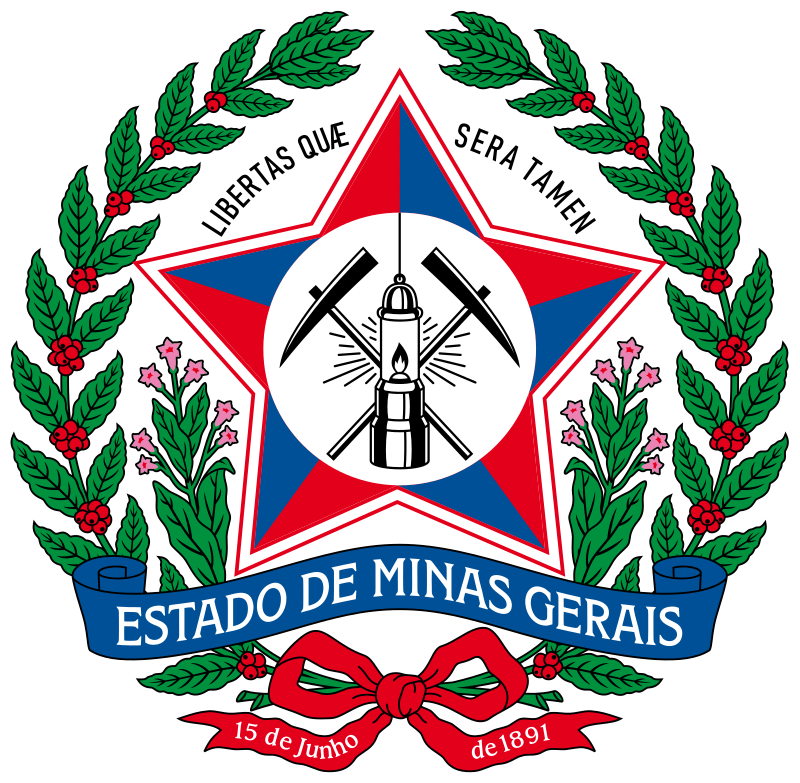 |
| Motto | (Latin) Libertas Quæ Sera Tamen. (English) Freedom albeit Late. |
| Anthem (Unofficial) | Oh! Minas Gerais |
| Demonym | Mineiro |
| Map | 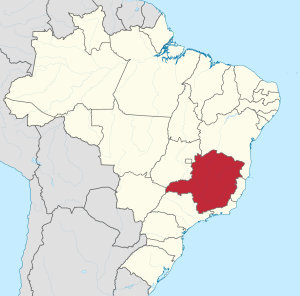 |
| Region | Southeast |
| Borderline states | São Paulo (S and SW), Mato Grosso do Sul (W), Goiás (NW), Distrito Federal (NW), Bahia (N and NE), Espírito Santo (E) and Rio de Janeiro (SE) |
| Municipalities | 853 |
| Capital | Belo Horizonte |
| Governor / Vice Governor | Romeu Zema (NOVO) / Paulo Brant (No Political Party) |
| Senators | Antonio Anastasia (PSD) / Carlos Viana (PSD) / Rodrigo Pacheco (DEM) |
| Area | 586,522.122 km2 (226,459.84 sq mi) |
| Population | 21,292,666 |
| GDP | R$576,199 billion (US$117.323.539.200,04 billion) |
| HDI | 0,731 |
| Highest Point | Pico da Bandeira (2,892 m / 9,488 ft). |
| Timezone | GMT-3 |
| Climate | Aw, Cwa and Cwb |
| Biomes | Atlantic Forest, Cerrado, Caatinga |
A part of the history of the current state of Minas Gerais was determined by the exploration of the great mineral wealth that is found in its territory. Its name (translating), even, comes from the large quantity and variety of mines present, which started to be explored since the 17th century and up to the present day move an important fraction of the state's economy.
Before the Portuguese...
The region where Minas Gerais is currently located was already inhabited by indigenous peoples possibly between 11 400 and 12 000 years ago, a period which is estimated to have originated Luzia Woman, a name received by the oldest human fossil found in the Americas, found in excavations in the Lapa Vermelha, a cave in the region of Lagoa Santa and Pedro Leopoldo, in the Metropolitan Region of Belo Horizonte. The discovery of Luzia Woman, in the 1970s, led to the hypothesis that the settlement of the Americas was made by migratory currents of hunters and gatherers, both coming from Asia, probably through the Bering Strait through a land bridge. called Beringia (that was formed with the drop of the sea level during the last ice age). The indigenous peoples that predominated in Minas Gerais, as well as throughout Brazil and South America, are descendants of these hunting tribes that settled in the region, coming from North America.
More than one hundred indigenous groups inhabited the state of Minas Gerais. Until the 16th century, the region was occupied by indigenous peoples of the macro-ge linguistic trunk, such as the xacriabás, maxacalis, crenaques, aranãs, mocurins, atu-auá-araxás and puris. Some decades after the Discovery of Brazil, however, they began to be aimed at serving as slaves, being captured by the bandeirantes to use them on their own farms or to be sold for centuries; those who revolted were exterminated, which caused a great reduction in the indigenous population (currently leaving five groups: xacriabás, crenaques, maxacalis, pataxós and pankararus).
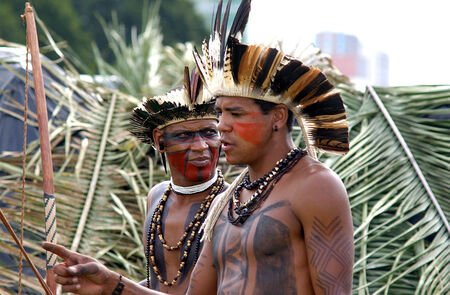
...and they come.
Until the middle of the 17th century, the Portuguese-Brazilian presence in the current territory of Minas Gerais was limited to some cattle farms established by groups that, coming from Bahia, had advanced through the São Francisco valley. The hinterlands were also covered by the São Paulo flags, in search of precious metals and native people to enslave. Bandeirante, is a term who designate the people that explored the countryside of Brazil, searching mineral richness, natives for enslave, and quilombos (Brazilians settlements made by Africans, or people from African origin) for destroy. They were, in majority, from São Paulo, and made expeditions for discover Brazil, as the Tordesillas Treaty was nullified since Portugal and Spain united in Iberian Union (more details in the future project of Brazilian History, collaboration with ZooTuber3000). The Bandeirantes contributed a lot exploring the region of Minas, despite destroying natives and Africans, just for find gold, silver, and other mineral richness.
THERE. IS. GOOOOOOOOOOLD!!! 🤑 (Uh oh, the Portuguese stole the gooooold!! 😡)
At the end of the 17th century, the pioneers discovered the first gold deposits. Then the effective occupation of the current mining territory began, intensified in the 1720s with the encounter of diamonds in the region that today corresponds to the municipality of Diamantina. Gold and diamonds were sent to Portugal through the ports of Parati and Rio de Janeiro.
The news of the discovery of these riches attracted a large population contingent to the area. Ouro Preto, figured to be the most populous city in the Americas due to the discovery of gold. Of course, this fact generated numerous conflicts over the ownership of the mines. One of the most significant was the War of Emboabas, which lasted from 1707 to 1710. It consisted of a confrontation for the control of the gold regions between São Paulo, who had discovered the deposits and, for this reason, considered themselves their rightful owners, and the emboabas, term with which the paulistas (São Paulo People) designated the “foreigners”, especially the groups of Portuguese and baianos (Bahia People). The paulistas left defeated and looked for new prospecting regions. The Portuguese Crown then began to control the extracted metal, with the collection of taxes and greater vigilance over the mining.
The camps grew up, next to the mining regions and were soon elevated to the category of villages. The most important were Sabará, Vila Rica (now Ouro Preto) and Ribeirão do Carmo (now Mariana). The latter was the headquarters of the captaincy of São Paulo and Minas de Ouro, created in 1709. After 11 years of subordination of the gold backlands to São Paulo, the metropolis created the Captaincy of Minas Gerais. In the following decades, the revolt against the high taxes levied by Portugal on the extracted gold grew in the mining towns.
In 1789, the movement known as Inconfidência Mineira was organized, which aimed at the independence of Minas Gerais. Discovered due to the betrayal of one of its members, the conspiracy was severely repressed. Its leaders were sentenced to exile or death. The most famous of them, Joaquim José da Silva Xavier, known as Tiradentes, was hanged and his body was quartered. At the end of the 18th century, gold began to run out and the territory plunged into a process of economic stagnation. The situation would only begin to revert in the 20th century, with cattle raising and the exploitation of iron ore deposits. However, the so-called gold cycle has definitively displaced the Brazilian economic axis from the Northeast to the Southeast. With the mines exhausted, many miners were the pioneers in coffee cultivation in Rio de Janeiro and São Paulo.
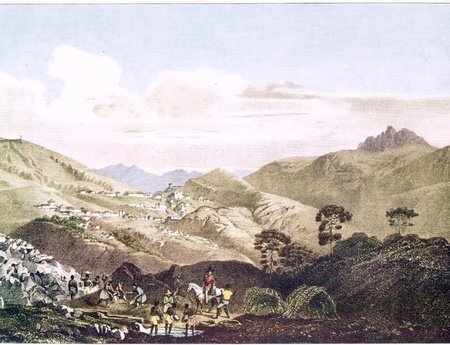
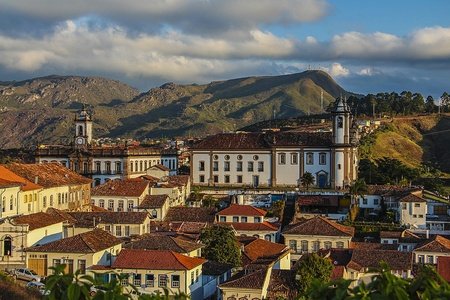
Grab me a Minas’s coffee, please ☕️
Until then, most of the captaincy's population was concentrated in urban centers and in the vicinity of the mining region. However, the depletion of gold and diamond deposits led to the diaspora of the urban population, who moved to other regions. The explorers started to create new farms in other regions of the current state, erecting chapels where later arraiais and villages appeared. At the beginning of the 19th century, there was an intense creation of towns, parishes, districts and municipalities. This contributed to the expansion and settlement of the mining territory, expanding its borders to the north (acquiring parts of the province of Pernambuco), to the east (acquiring areas of Espírito Santo), to the west (annexing the region of the Triângulo Mineiro, previously belonging to Goiás). The population of Minas Gerais became predominantly rural, and the gold cities became more and more empty, which had a great influence on the culture and politics of the province.
In 1889, the things were interesting, and Brazil became a Republic (again, more in the future project with ZooTuber3000). There, started the period of the Old Republic in Brazil began, which was initially commanded by military presidents. Only in 1894 was the election of the first civilian president of Brazil, beginning the period of the Oligarchic Republic. In Minas Gerais, the first great coffee barons appeared, responsible for significantly increasing the state's production. The coffee oligarchies had a great influence on the national political scene, to the point of choosing the representatives who would occupy the position of president of the country. The two most populous states in the country, then, signed an agreement in which the elected presidents would be alternated between paulistas and mineiros, what became known as the coffee-with-milk policy.
However, there were some political divergences between the two states, which allowed the election of presidents from other states, although they never failed to exert influence over the electoral process. In the 1920s, several factors accelerated the decline of oligarchic dominance, such as popular revolts, tenentist movements and the economic crisis of coffee, which worsened even more with the great depression. But the coffee-with-milk policy did end when the then São Paulo president Washington Luís was supposed to appoint a mineiro to succeed, but he appointed another paulista, Júlio Prestes. In opposition to the episode, Minas Gerais joined the Liberal Alliance, which carried out a coup d'état in 1930 and established a new republic in Brazil, under the command of Getúlio Vargas.
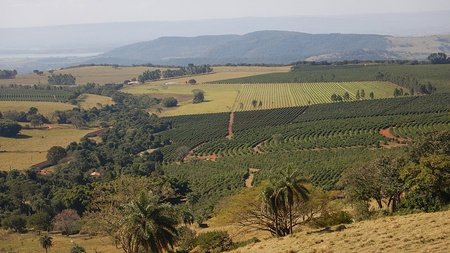
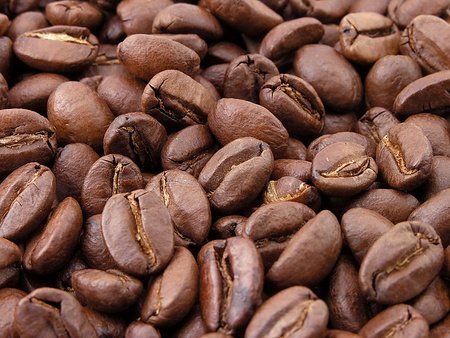
The industrialization is coming...
The coffee cycle in the state had certain particular characteristics that disadvantaged the state's economic growth. The profit generated by the culture was partly destined for export ports in neighboring states. In addition, at the end of the period of slavery, there was no direct transition to free and wage labor in the fields, which led to less monetary circulation. Another aggravating factor was the disarticulation between the regions of the state, which had more economic relations with neighboring states. In recognition of this situation, the mining elites began an attempt to centralize the state economy based on several initiatives, among them the creation of a new capital, Belo Horizonte, in 1897. An exception to the industrial backwardness was the city of Juiz de Fora, which presented an industrial development boom sustained by the coffee economy combined with its proximity to Rio de Janeiro.
From the end of the 1940s and throughout the 1950s, however, Minas Gerais has undergone an important process of transformation, which aims to remedy the problems that hindered mining development, especially during the period of Juscelino Kubitschek's term as governor ( 1951-1955) and president of the republic (1956-1961). The Minas Gerais Energy Company (CEMIG), several hydroelectric plants and thousands of kilometers of highways were created. An important industrial sector that developed during this period was metallurgy, supported by the exploitation of iron in the central region of the state. However, the economic instability that followed during the 1960s affected the continuation of such growth, leaving the state behind. During the military dictatorship, the federations of industries of Minas Gerais and important industrialists from Minas Gerais supported the regime.
In the following decade, however, Minas resumed its trajectory of economic growth, benefited, above all, by the process of industrial decentralization. As a result, the growth of Minas Gerais' gross domestic product was higher than the national average for several years. This process was due to the increase in industrial production and the strengthening of agriculture. This process also provoked an increase in the percentage of the population that lived in the cities, although much of this rural exodus has motivated the emigration of the population to the large urban centers of other states. In the 1980s, Minas Gerais economic growth suffered a new discontinuity due to the generalized economic crisis that the country was going through. Even so, mining growth was still higher than the national average. From the 90s, the state showed low economic dynamism, following the national trend. Since then, Minas Gerais has consolidated its position in the national economy with the third largest GDP in the country, and remains in the position until today.
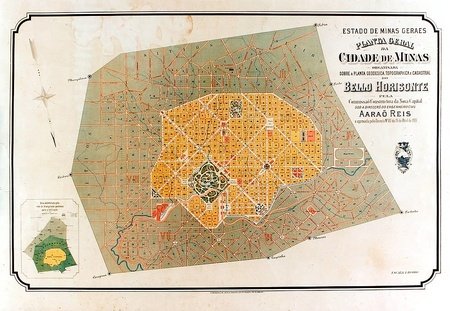
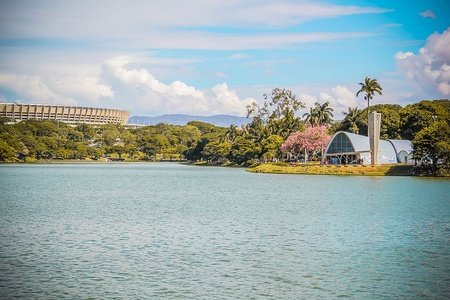
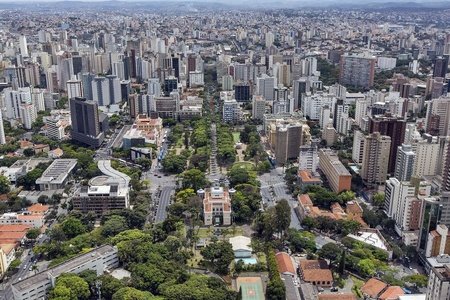
Finish of Part 1
So, we’ve finished the first part of Minas Gerais: Marvelous Sunrises, Amazing Surprises. Minas Gerais is a freaking big state, with many facts. What a history we saw! Minas Gerais History, as Brazilian subdivisions, has 300 years. And in the next 300 years? What will happen to this amazing place? Surely, won’t stop to be amazing. The journey of show you why MG is the best, is starting now. The challenge is going now. I won’t stop in the half. I started? I’ll finish. I accept my own challenge. Hope you wait for the next part, with Minas’s geography! This was the first part of Minas Gerais: Marvelous Sunrises, Amazing Surprises!

#Minas4Life!
#USAFORLIFE
And we have 4 of the 14 UNESCO World’s Heritage of Brazil. They’re the Historical City of Ouro Preto, the Historical Center of Diamantina, The Santuário de Bom Jesus de Matosinhos, and the Architectural Ensemble of Pampulha :)
https://pt.m.wikipedia.org/wiki/Lista_do_Patrimônio_Mundial_no_Brasil
EDIT: I found. Is about 18,5 per 100k inhabitants
#SãoPauloMinasForLife!!!
#SãoPauloOCarambaKKKKEu só tenho tristeza, que vocês paulistas comem pão de queijo borrachudo, com 47,2 quilos de ovo. Não adianta imitar, fechou? Kkkkk
E sim, pão de queijo é delicioso :)
Mas enfim, fala BISCOITO, não bolacha (ihhh começou kk)! E sincerão, eu não gosto de café. Acho amargo demais kk
Biscoito raramente vence bolacha kkkk. Experimenta café com açúcar, é bom d++
Algo que o cookie não tem😝
#Turkey4life!#Minas4life!You all are really playing the fool lol4Life, 4Ever, 4Eternity.
#Gaziantepisthebest#MichiganisthegreatestNice Blog. I learned a lot about Minas Gerais(its actually pronounced Mina Heria if we are using actual English phonetics)#YouJoinedInAnIllusionAnd thank you! You'll learn more soon!
OH, yah another, i really want to learn about brazil without any research so maybe make a best city ineach state/province of Brazil
But our blog about Brazilian history is gonna be betterNote: What you called a "land tongue" is officially a land bridge, which is what Beringia was. Your translations may have confused this.
Idk... but, just waiting lolAnd, damn! Fixing it! Also, thanks for these kind words! Minas is the best state ever. The next parts may high the expectatives... lol
You have started an amazing series MG and I can tell it will be as awesome as BNP! Can't wait for the next part :)
Once again, #Minas4Life and anyone who opposes it shall be dealt with by the Governor of the state lol.
So, let’s say, life imprisonment lol! Also, thank you for this comment! Thanks a lot!!